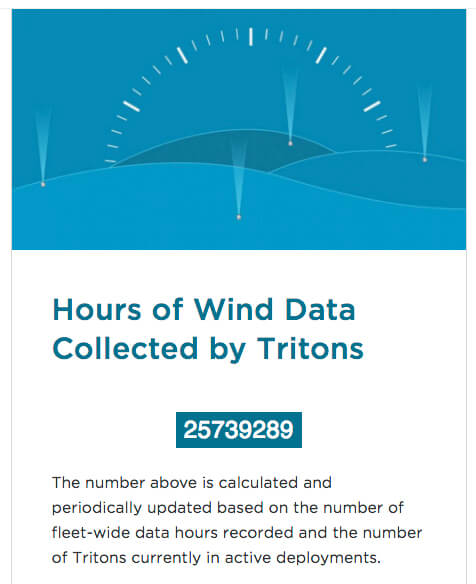
Vaisala’s Triton is a remote sensor used for site selection and bankable wind resource assessment. Learn more here.
The wind energy industry is increasingly adopting data collected by remote sensors for a wider range of applications. In doing so, developers and operators have benefitted from reduced assessment times, lower development and permitting costs, and an improved understanding of on-site wind conditions.
To date, Vaisala’s Triton Wind Profiler has been deployed on almost 5,000 wind measurement campaigns, and is increasingly being used in a diversity of ways by European firms both domestically and overseas, from wind resource assessment through to bankable due diligence and noise studies.
The development comes as wind energy firms continue to reduce their reliance on meteorological (met) masts and embrace the use of remote sensing units across their project portfolios and operations.
Bankable due diligence
Triton is increasingly being used to support project financing. While met masts have long served as the industry standard in this respect, a growing evidence base demonstrating the accuracy of remote-sensing data has led to greater acceptance of this data to demonstrate projects’ financial viability.
In France, for instance, a leading developer has successfully used Triton data to secure financing for a five-turbine wind farm. The unit measured wind conditions at the site at a hub height of 120 meters, with the developer also installing an 80-meter met mast and extrapolating measurements for the additional 40 meters. The two sets of data were together submitted to the bank and formed the basis of the successful financing proposal, with the Triton data in particular being used to reduce the degree of uncertainty in resource calculations.
Wind-measurement challenges
Remote sensing has also enabled developers to overcome unique market challenges, such as strict noise regulations in France, the United Kingdom, and elsewhere. Here prospective developers are required to carry out detailed analysis of the potential noise impacts of new wind farms under a series of different conditions. This requires brief campaigns to capture wind speed measurements.
Given this short time period, erecting a met mast to undertake this analysis would be prohibitively expensive. However, the Triton’s versatility and ease of deployment makes it well suited to the task, and it is frequently deployed for this purpose by leading developers in France and the United Kingdom.
Diverse applications
The industry’s growing confidence in remote sensing is equally reflected in the Triton’s increasing use in a number of new markets throughout Europe, the Middle East and Asia. Developers and operators in those markets are using Triton for applications as diverse as shear validation, performance analysis of operating wind farms, reducing uncertainty derived from complex terrain and acting as a permanent on-site met station.
“As we approach the Triton’s 5,000th deployment, it’s clear one of its greatest assets is an ability to serve a wide range of uses throughout site prospecting, development and project financing,” said Nihat Hünerli, EMEA Regional Manager for Vaisala’s energy business unit. “In Europe, we’ve seen how the sophisticated range of data provided by the Triton has given financiers a greater understanding of site conditions, and this increased confidence in the data has been instrumental in ultimately securing financing for those projects. Similarly, in the emerging wind markets, the unit’s versatility and the quality of data it provides is leading to it rapidly becoming the resource assessment tool of choice.”
Vaisala will exhibit at this year’s WindEnergy Summit/WindEnergy Hamburg conference, taking place from September 25 to 28, and will have an operational Triton on display in Hall B6, Stand 273.
More information on Triton: vaisala.com/triton
Filed Under: News, O&M, Sensors




